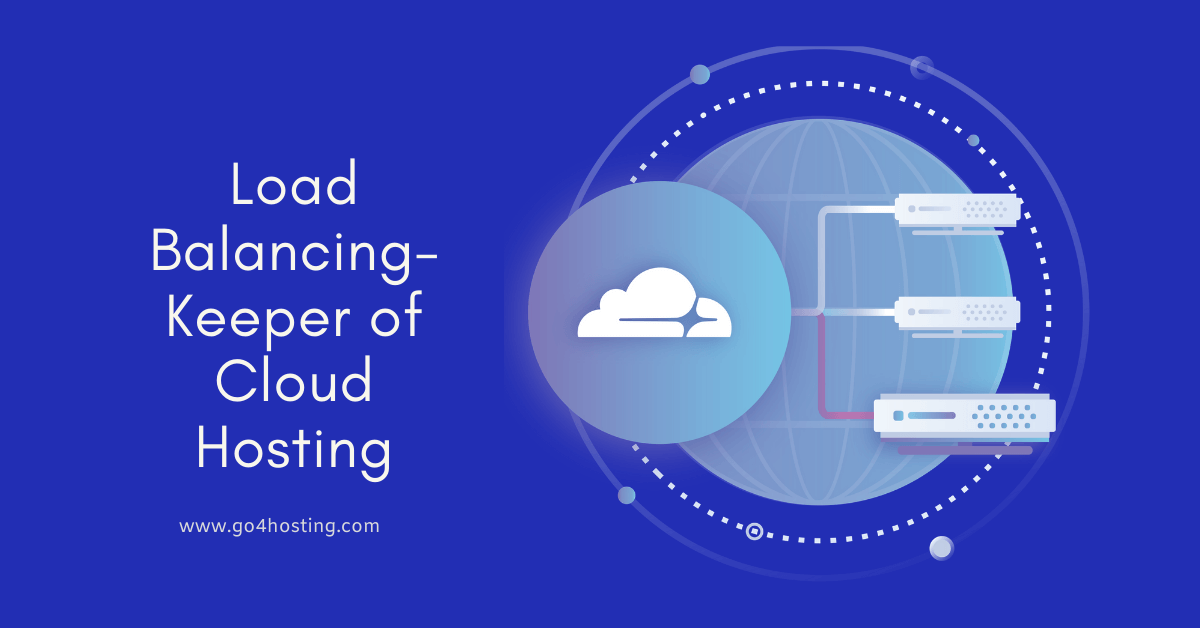Load Balancing- Keeper of Cloud Hosting

With distinct and multiple businesses are finding applications in cloud hosting and may be poles apart but are getting mutually benefitted. The data over cloud hosting is increasing day by day and so is the need for computing and storage resources. Cloud has been helping organizations to take advantage of computing resources since so long and already cloud-based services are used in one or the other form. The elevated number of players on the field of the cloud has just made it a complete pandemonium. In the times of such a commotion, load balancing arrived as a blessing.
Load balancers – apprehensive insight
A website or for that matter any web application is accessed through multiple IP addresses simultaneously, then traffic on that particular page skyrockets. This exponential increase in traffic on the webpage sometimes leads to the crashing of that page. A single crash for a few minutes also hampers the business to an unimaginable level. Let me make the situation clearer, imagine an e-commerce website has recently announced the end season sale. Millions of people also access the same website during these times and lakhs of sale are accomplished in minutes. Hence site going down for even minutes would be catastrophic.
The cloud hosting environment is said to be assigned a definite amount of load and depending on that it is decided whether the cloud system is underloaded, overloaded or it is balanced. System failures are evident when the system is either under or overloaded. These system failures show their effects on power consumption, execution time, machine failure, etc. Therefore, the load balancing of tasks over the cloud becomes an important altitude to overcome all the problems.
These load balancers detect the extent of loading i.e. under or overloaded nodes and then accordingly balance the load. On this note, let’s get acquainted with the types of load. These are such as memory load, computation load, network load, etc. All ways are of load balancing work unidirectional to optimize different performance parameters. A company might be using a cloud-based CRM for storing customer information, a cloud-based ERP system to track data and a web-hosting vendor like Google to host its website and a cloud system to run a handful of custom applications. Hence, if all the components are hosted in the cloud, the load balancers should also be hosted inside the cloud only.
The functioning of a load balancer
Imagine load balancer as a traffic policeman, who sits in the middle of the bedlam full of your servers and routing client requests with all the servers individually capable of fulfilling those requests and simultaneously maximizes speed and capacity utilization. The load balancers make sure that none of the servers should be overworking because that would degrade the performance ultimately. The distribution is being done for workloads and computing resources across one or more servers. The aim is to ensure maximum throughput in minimum response time. This all is achieved by segregating workload among two or more servers, hard drives, network interfaces or other computing resources. The website demanding high traffic makes the most effective use of cloud load balancing for ensuring business continuity. Its functions can be jot down into three points-
- Distributing client requests or network load efficiently across multiple servers.
- Sending requests only to servers those are online and thus ensuring high availability.
- Adding or subtracting servers depending on the demand and hence improving flexibility.
In the absence of a load balancer, any client has to wait while his request is getting processed. This leads to frustrated clients and thus hampering the business for long.
Flavors of load balancers
Load balancers come in two flavors i.e. hardware and software load balancing. The hardware load balancer uses specialized processors and has to be bought from third-party vendors. Whereas the software load balancers generally run on commodity hardware and can be installed on the hardware of your choice. Thus software load balancing technique is less expensive and more flexible at the same time.
But irrespective of the flavor of load balancer the advantages with which it comes are common and such as –
- Increased scalability
- Sudden traffic is handled smoothly
- Applications performing at their optimum efficiency
- Unmatchable flexibility
- Zero % hampering of business
Thus 21st century, cloud load balancing is the key to uninterrupted and smooth business.





